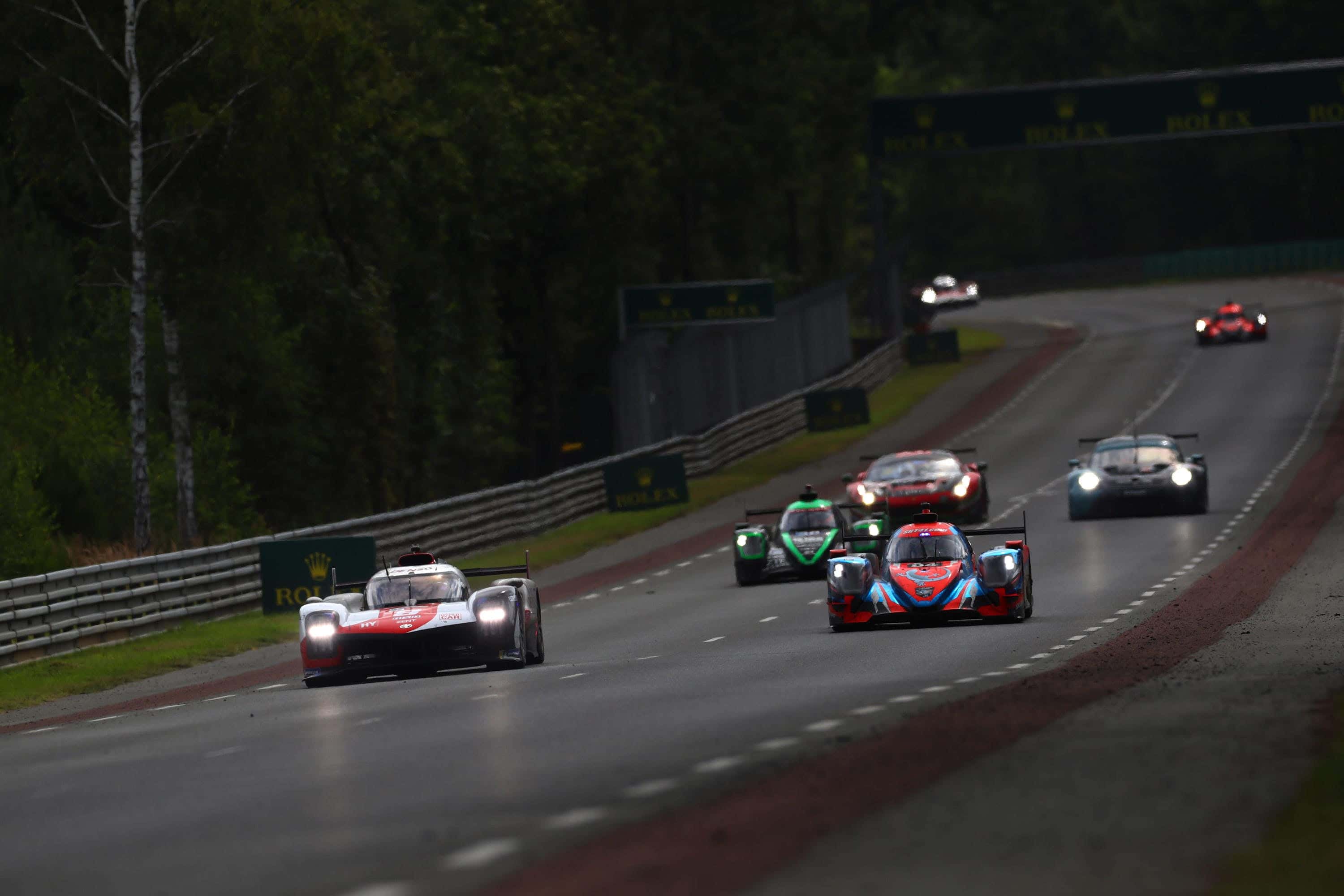As The Drive‘s token European, I obviously like to talk a big game about our wine and baguette-filled lifestyles while tootling ’round in my tiny French car. It’s immensely satisfying to the stereotype, then, that starting next year, Le Mans is going to be powered by wine. I don’t mean a shift from kegs of Warsteiner in Beausejour campsite—the actual car fuel is going to be made from the bioethanol byproducts of winemaking.
Like every motorsport series, the World Endurance Championship is having to think about the visuals of hooning petrol-powered, high-horsepower monsters around for hours on end. As manufacturers come back to the series after having exited for more eco-friendly climes, there’s an image issue with trying to make sure the racing is as clean as possible. That’s why they’re switching things up for a “renewable” fuel from next year onwards.
WEC does have hybrid classes in Hypercar and the new-for-2023 LMDh but with the GT and LMP2 tech firmly stuck in the combustion era, the most obvious place to make a carbon saving is in the fuel. That’s why it has announced that TotalEnergies, the series’ fuel supplier, will be shifting from the “Excellium Endurance” fuel blend that was used this year to “Excellium Racing 100,” an exclusive fuel to the series that’s formed using byproducts from winemaking near TotalEnergies’ refinery.
The basic process is that ethanol can be made from wine residues and all the manky bits not actually going into a bottle, then it’ll be combined with ETBE that TotalEnergies make out of feedstock from local agriculture. That doesn’t necessarily mean animal food, it could even actually be fuel but WEC do promise it’ll be coming out of a circular economy, not being drawn away from other sources. It reckons all of that will result in a fuel which reduces the race cars’ emissions by 65 percent.
That’s all well and good and any reduction we can make is a reduction we should. An event like Le Mans, needless to say, isn’t generating most of its emissions from the cars’ exhausts—like any motorsport event, it’s in freight and fan attendance—so there’s a fairly major extent to which this is trying to fix a dam with a toothpick. And it’s not as though motorsport is the worst CO2 contender even in the sporting world, it’s just the one that gets looked at the most because it involves cars.
Then there’s the issue of calling the fuel renewable. Yeah, it kinda is in the sense you can make more of it but it’s not coming from a sustainable source like wind or solar power, it’s being deliberately refined. Although there are benefits to it, compared to using gasoline from crude oil, it’s not a magic bullet and despite the massive quantities of wine made in France, it’s not likely you could extend this method of making it to a commercial venture.
But still, it’s tremendous to know that next year’s 24 Heures du Mans will be run off wine.
Got wine? Hell yeah, brother. Tell me about it on [email protected]
RELATED
Toyota’s 1-2 Finish at Le Mans Shows It Can Dominate the Hypercar Class, Too
The highest-placing non-Toyota was Alpine's No. 36 entry, four laps back.READ NOW
RELATED
Corvette Racing's Jordan Taylor Pays Tribute to Dale Earnhardt With Le Mans Helmet
He'll be driving the No. 3 Corvette C8.R.READ NOW
RELATED
Build Your Own Le Mans Prototype-Style Race Car With This $24K Starter Kit
It's an 80-percent-accurate replica of the Bentley Speed 8, but you'll need to source a powertrain for it.READ NOW
RELATED
Audi's LMDh Electrified Prototype for Le Mans Is Set to Go Racing in 2023
Including customer teams.READ NOW
RELATED
Buy This Longtail Fastback Top and Make Your Mazda Miata Look Like a Le Mans Racer
You don't need McLaren money to have a lovely longtail sports car.READ NOW
Source: Read Full Article

